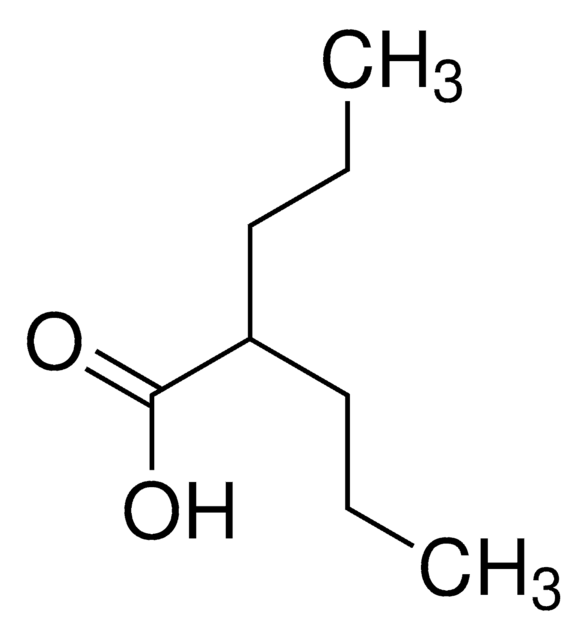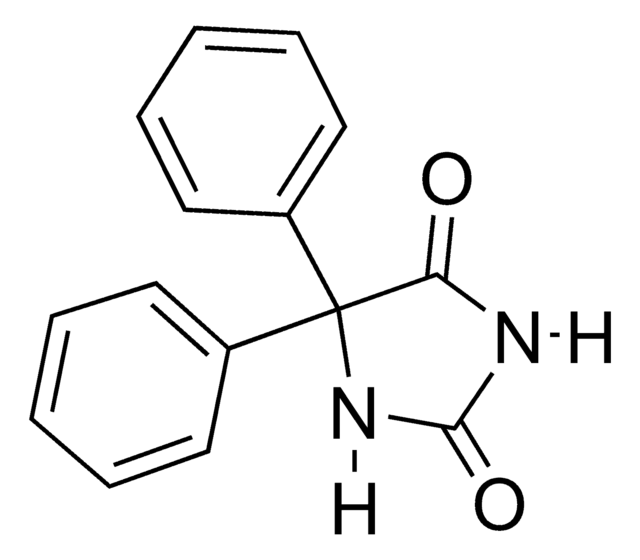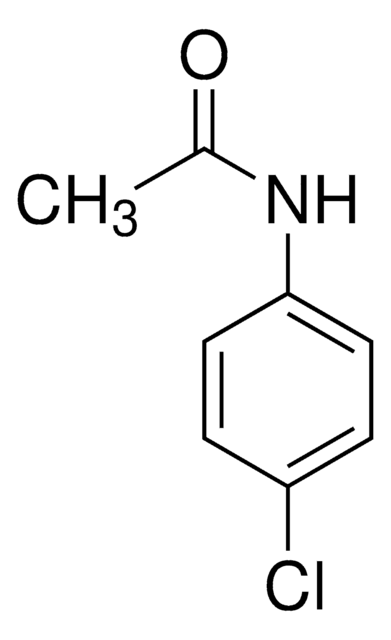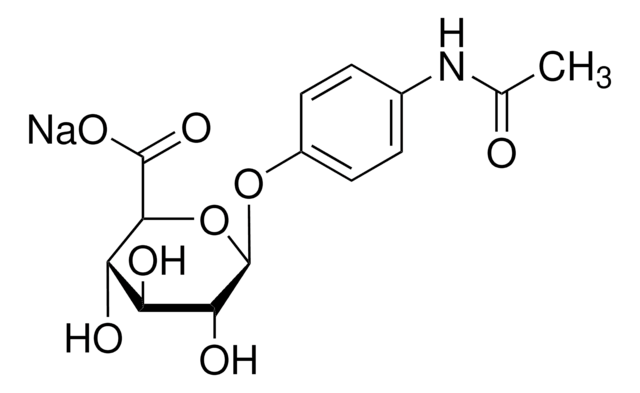A-064
Acetaminophen solution
1.0 mg/mL in methanol, ampule of 1 mL, certified reference material, Cerilliant®
About This Item
grado
certified reference material
Nivel de calidad
formulario
liquid
Características
SNAP-N-SPIKE®, SNAP-N-SHOOT®
envase
ampule of 1 mL
fabricante / nombre comercial
Cerilliant®
concentración
1.0 mg/mL in methanol
técnicas
gas chromatography (GC): suitable
liquid chromatography (LC): suitable
aplicaciones
forensics and toxicology
formato
single component solution
temp. de almacenamiento
−20°C
cadena SMILES
CC(=O)Nc1ccc(O)cc1
InChI
1S/C8H9NO2/c1-6(10)9-7-2-4-8(11)5-3-7/h2-5,11H,1H3,(H,9,10)
Clave InChI
RZVAJINKPMORJF-UHFFFAOYSA-N
Información sobre el gen
human ... FAAH(2166) , PTGS1(5742) , PTGS2(5743) , TRPV1(7442)
Descripción general
This substance is listed on the positive list of the EU regulation 10/2011 for plastics intended to come into contact with food. Find all available reference materials for compounds listed in 10/2011 here
Aplicación
- Enhanced removal of acetaminophen from aqueous solutions: A study utilized kumquat peel-derived biochar supporting zeolitic imidazole framework-67 (ZIF-67) to improve peracetic acid activation for acetaminophen removal, demonstrating an innovative approach to wastewater treatment (Nguyen et al., 2024).
- Co-doped biochar for acetaminophen degradation: Research on Cu/N co-doped biochar activating peroxymonosulfate (PMS) revealed a non-radical degradation pathway for acetaminophen dominated by singlet oxygen and electron transfer, providing insights into sustainable environmental cleanup technologies (Wu et al., 2024).
- Biodegradation of pharmaceuticals including acetaminophen: A study on anaerobic co-metabolic biodegradation of pharmaceuticals and personal care products highlighted glycerol fermentation as a driving mechanism, offering a feasible strategy for managing environmental contamination from substances like acetaminophen (Carneiro et al., 2024).
Información legal
Producto relacionado
Palabra de señalización
Danger
Frases de peligro
Consejos de prudencia
Clasificaciones de peligro
Acute Tox. 3 Dermal - Acute Tox. 3 Inhalation - Acute Tox. 3 Oral - Flam. Liq. 2 - STOT SE 1
Órganos de actuación
Eyes
Código de clase de almacenamiento
3 - Flammable liquids
Clase de riesgo para el agua (WGK)
WGK 2
Punto de inflamabilidad (°F)
49.5 °F - closed cup
Punto de inflamabilidad (°C)
9.7 °C - closed cup
Listados normativos
Los listados normativos se proporcionan para los productos químicos principalmente. Para los productos no químicos sólo se puede proporcionar información limitada. Si no hay ninguna entrada, significa que ninguno de los componentes está en la lista. Es obligación del usuario garantizar el uso seguro y legal del producto.
EU REACH Annex XVII (Restriction List)
Certificados de análisis (COA)
Busque Certificados de análisis (COA) introduciendo el número de lote del producto. Los números de lote se encuentran en la etiqueta del producto después de las palabras «Lot» o «Batch»
¿Ya tiene este producto?
Encuentre la documentación para los productos que ha comprado recientemente en la Biblioteca de documentos.
Los clientes también vieron
Nuestro equipo de científicos tiene experiencia en todas las áreas de investigación: Ciencias de la vida, Ciencia de los materiales, Síntesis química, Cromatografía, Analítica y muchas otras.
Póngase en contacto con el Servicio técnico







